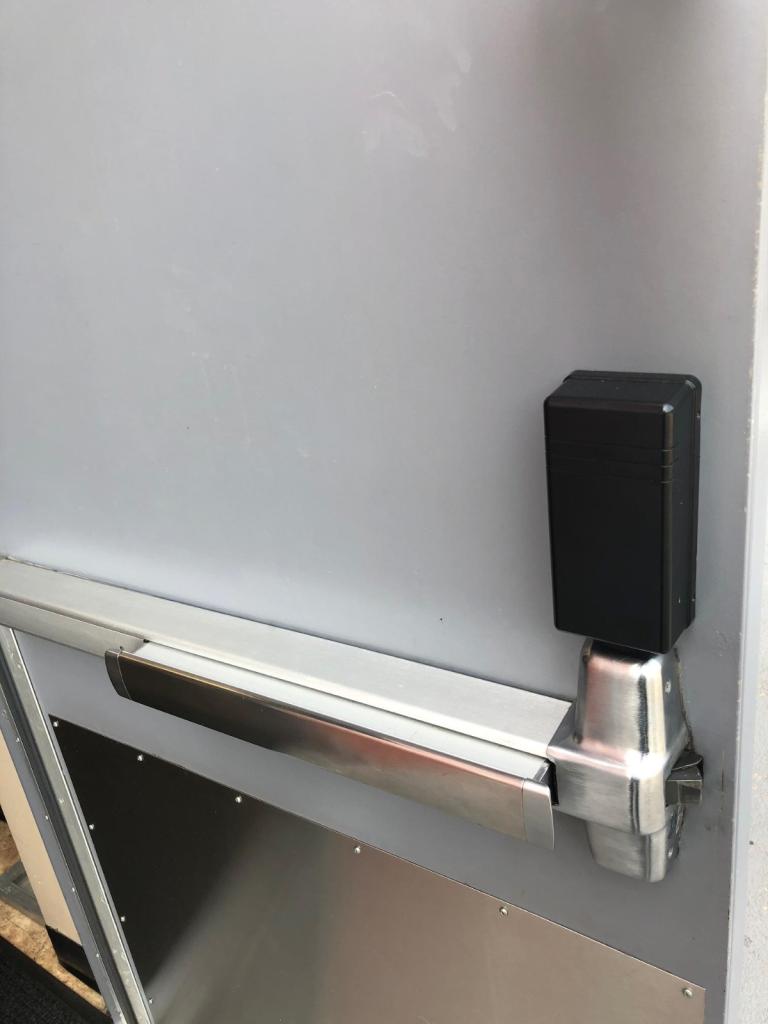Our team received a request for commercial door repair in Los Angeles, CA. Unfortunately, one of the panic bars in this building was not working when depressed. Our locksmith saw that the panic bar's anti-pick was all gunked up, preventing the dead latch from popping out when the door closed. That caused the dead latch to stick. We just needed to lube the anti-pick and the dead latch so it would not stick again. After we cleaned it, we tested it a few times, and the dead latch popped out on its own like it was supposed to.
An exit device is a piece of hardware that you can use to open the door from the inside. This essential feature helps keep building occupants safe in case of fire or other emergencies while not requiring any knowledge or training on operating it. Requirements for exit devices in commercial properties are outlined in your state's construction code, including where they should be placed, the type of locks you can have, and how many you need. You should install the right exit device to ensure your business runs as smoothly and safely.
What Are the Different Types of Panic Bars?
Cross Bar
Cross bar has a lowered bar that latches from the mounting hardware. One of the benefits of the cross bar is its minimal look. That makes them good for glass doors and other high-finish doors that need to look aesthetically pleasing. However, this type has limited electrified options due to the lack of space in the device to house electronic components.
Touch Bar
Touch bar is simply a wide metal bar that opens the door when pressure is applied. While a cross bar is slightly raised to leave a gap between the door and the bar, a touch bar sits flush with the door. Because of this design, nothing can get stuck behind the bar. In addition, touch bars allow flexibility when electrified options are required.
Recessed Panic Bar
Recessed panic bar is one option if you want to reduce the projection of the hardware from the face of your door. This hardware can give your door a sleeker look. On the downside, it necessitates a cut-out in the door, and installation is limited to hollow metal doors.
Panic Hardware vs. Fire Exit Hardware
Panic bars are installed on exterior, non-fire-rated openings. Mechanical dogging (holding the latch retracted) allows panic bars to minimize the wear and sound of frequent latching and unlatching during daily use.
On the other hand, fire exit hardware can be used on both fire- and non-fire-rated doors. Fire doors are required to positively latch. Fire exit hardware ensures the fire door always latches when it closes. Unlike panic hardware, fire exit hardware cannot be mechanically dogged.
What Could Go Wrong with a Panic Bar?
A few things can go wrong with a panic bar. Some of the most common problems are:
Poor installation, frequent and forced use and misaligned internal rods are the most common reasons for panic bar problems. We recommend hiring a professional, licensed locksmith to handle all your exit devices since they are code enforced.
Kardo Locksmith is a locksmith service that specializes in commercial door repair. We are always here to provide the best locksmith services at competitive prices. Our team of licensed professionals is equipped with the latest tools and technologies so that we can get your emergency doors' push bar and panic bar fixed quickly and hassle-free. When you need locksmith services, call on Kardo Locksmith.







Comments: